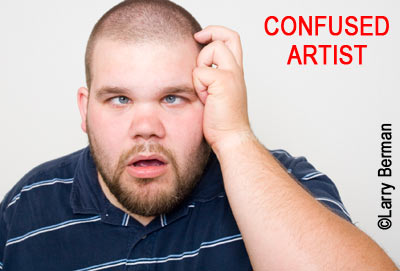
I get calls about this all the time from confused artists. A show is asking for digital images that meet the following requirements, "300DPI or larger." or how about this one that I came across when I helped a local artist prepare images for an application; "Save photos as JPEGs at 400 dpi. The higher the resolution, the better to see your artwork!"
Only actual pixels matter, and images should be defined in height and width in pixels.
Resolution
DPI is dots per inch that a printer puts down on paper. PPI is pixels per inch and is the density of the pixels within the image. Neither PPI nor DPI is the size of the image and has no relationship to how large an image displays on a monitor or is digitally projected. In fact, an image that is 1920 pixels at 72 PPI is exactly the same file size, displays exactly the same viewable size, and has the same amount of detail in the jury room as an image that is 1920 pixels at 300PPI or even 1920 pixels at 4000PPI. Digital display devices like monitors or projectors only see actual pixels, not resolution. Resolution is only important when making a print where the closer together the ink dots are (DPI) usually means a higher quality print.
Pixels vs. Inches
Monitor and projector resolution is defined in pixels. Though you purchase monitors based on their size in inches or how much space they take up on a desktop, what displays on them is defined by their resolution in pixels. For example, 17 and 21 inch monitors, each set to 1024x768 will display a 500 pixel (long dimension) at the same proportional size taking up approximately 2/3 thirds of the height or 1/2 of the width. So when an art show asks for images size 5x7, they are referring to how large the image displays on the monitor they are using to write the instructions and it has no bearing on how large the images actually display on the monitors of the artists applying. That's why art shows need to ask for images in pixels.
Square images
Both monitors and projectors are horizontal format. Therefore if an image is asked for at 1024x768, the vertical size will be two thirds the horizontal size, and is unfair for any artist submitting vertical jury images. The beauty of the 1920x1920 pixel image format is that square images display both horizontal and vertical jury images exactly the same size. That's why the first day ZAPP released their image specifications, which were to be 1280x1920, I called and suggested that to be fair, they ask for a square image masked with black borders. In actuality, this is exactly the same as 35mm slides which can be rotated so that both horizontal and vertical openings are the same.
Digital Cameras and resolution
Digital cameras do not capture resolution, only actual pixels. You can decide what resolution you want by opening the image in Photoshop and unchecking resample before changing resolution. Resolution does absolutely nothing to file size as long as the pixel dimensions don't change. What's important is that you set your digital camera to capture the most amount of pixels at the highest image quality with the least amount of JPEG compression. Read my article on how to set your digital camera to photograph art.
Art Shows not using ZAPP or JAS but asking for digital images
For shows that don't understand digital images, I have two articles on my web site that I e-mail to any show interested in doing it in a way that's fair for all artists. How to ask for digital images and the best way to view digital jury images.
Asking for resolution isn't asking for an image, it's only asking for the density of the pixels in an image. You need to know the height and width of the image either in pixels (for monitor/projector jurying) or inches (for printing) to provide what they need, and this goes for any digital image submission, not just art show jurying.






No comments:
Post a Comment